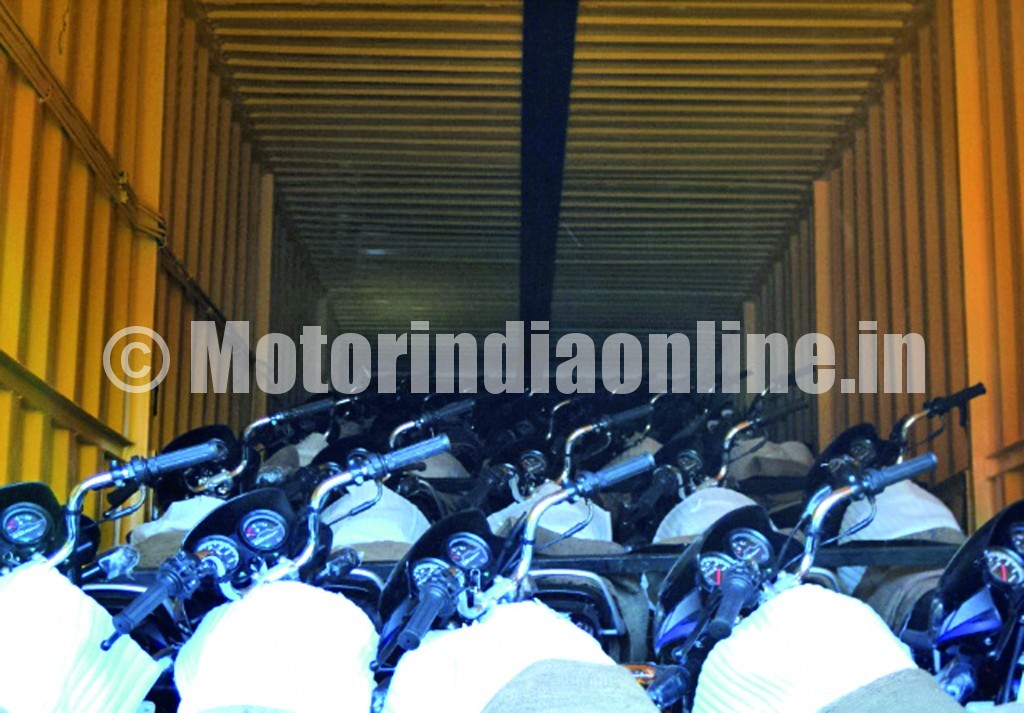
With competition hotting up, Hero Motocorp Limited, the world’s largest two-wheeler manufacturers based out of India, is pushing hard for a wider and quicker reach of its wares across its 750 plus national dealer network.
Transportation of two wheelers into the market is a different ball game. Unlike the finished four-wheelers that moves on trailers mostly with almost 10 entry level vehicles such as Maruti Suzuki’s Alto, Tata Motors’ Nano (the world’s cheapest car) etc, two wheelers are invariably sent out in rigid trucks with a maximum capacity of 55 or 65 or 77 in double decker format.
Typically, two wheelers are clamped row-wise with nuts and bolts at both ends with an iron frame to keep vehicles from moving away from their base. Plus rucksacks or jute bags are folded and kept over the seats to avoid marking of iron frames on them. On the car carrier floor, each car is lashed to the grooves.
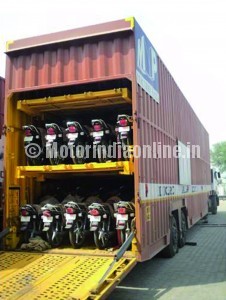
According to Mr. Deepak Sharma, Head of Logistics at Hero Motocorp, clamping of two wheelers is “tedious, time consuming and laborious” because the iron frame has to be clamped at both ends, needed more than one pair of hands at the time of loading and unloading.
As part of its innovation trip, Hero Motocorp has roped in BLG Parekh Logistics, a joint venture between globally renowned BLG and Parekh of India, for removing bottlenecks in finished two-wheeler transportation.
BLG Parekh Logistics, after a few rounds of trial, has brought in its patented ‘clamped version’ of two-wheeler movement in India. BLG Parekh has a lot of experience in this arena as it services Honda Brazil. Mr. Sanjay Gupta, Vice President of BLG Parekh maintains that it is a “simple process” and “no damage to seat and absolutely nil transit damage”. Above all, turnaround time at the time of loading and unloading is slashed drastically.
Each vehicle is clamped on both sides from footrest. These clamps are mounted on the floor. Though carrying capacity remains the same as in the conventional transportation, efficiency level has shot up. Over the past few months, BLG Parekh has inducted two vehicles and done more than 30 trips since January this year. Gupta confirms that he is negotiating with Bajaj Auto – No.2 in the two-wheeler segment in India – to introduce this modern version.
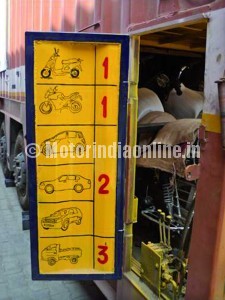
While the benefits of this patented clamped version are a big hit with Hero Motocorp, the challenge is the empty haul. Given the design pattern, BLG Parekh vehicles cannot be put to any other usage. It can carry only two wheelers. Others can slide down decks and use the same vehicle for any other purpose. Therefore, BLG Parekh vehicles are not put on national routes. Currently they are being deployed in north India only. But Gupta is confident that once his model gains acceptance and induction, he would ply all India because that would fetch BLG Parekh return loads as well in west and southern India.
BLG Parekh is clear that it would not sell its patented vehicle to others. “It will be our USP,” explains Gupta, in a telephonic interview from Pune. Hero MotoCorp Sharma concedes that this vehicle will be a “game changer”.
While productivity efficiency and safety aspects get addressed, Hero MotoCorp has gone ahead with inducting higher capacity carriers as well. Now, it has the capability to send 180 two wheelers in a single trailer-truck. Bulktrans, a Delhi-based transport service provider has come out with a four-deck carrier model. In this format, two wheelers are palletized and fitted into the trailer-truck. Besides, Hero Motocorp has access to more three decker formats also which can carry 106 two wheelers in a trailer-truck format.
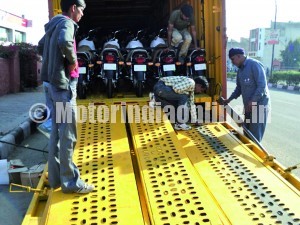
For a company of Hero Motocorp’s size whose average monthly production is 600,000 from three manufacturing sites (Gurgaon, Daruhera, Haridwar), total dependency on road transport for dealer network servicing is a risky and therefore, is exploring rail movement option also. Almost six per cent of total output is moved through rail. As of now, most of rail movement happens in north and south. Two types of wagons are used viz., BCM and NMG with a carrying capacity of 2,200 and 32,00 vehicles respectively. Sharma hints that they would like to take the rail transportation to 40 per cent over the next few years. Even though rail freights have gone up steeply in the recent past, rail movement is a strategic decision and it is unlikely to be diluted. Fourth brand new plant is getting ready for roll out (2,500 motorbikes per day) in October this year at Neemrana, Rajasthan – hardly 100 km from its mother plant at Gurgaon.
Meanwhile, Hero Motocorp has picked Damco, globally renowned 3PL, to handle its alloy steel imports from Chinese suppliers. It receives 275 40-feet containers every month from China. Until now, Hero Motocorp was managing the entire operation on its own – from end to end. Now Damco, selected after a long and strenuous selection process, will pick up these material from Chinese vendors factory gates, stuff them in containers to Indian port of Pipav and or JNPT, get it customs-cleared, move by road/rail to its own proposed warehouse near the Gurgaon plant and supply to Hero Motocorp’s plants. So far, Damco has managed 50 container movements.
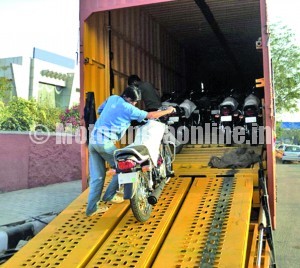
However all imports are not outsourced to Damco. Almost two-thirds of Hero Motocorp’s imports are managed by in-house team and this will continue. Exports is another area where the world’s largest two-wheeler manufacturer is exploring to outsource.
When the fourth plant at Neemrana goes on stream in October this year, all component suppliers (most of them to be situated in the adjacent vendor park) will have to supply their material in palletable format only and no cardboard packaging will be entertained.